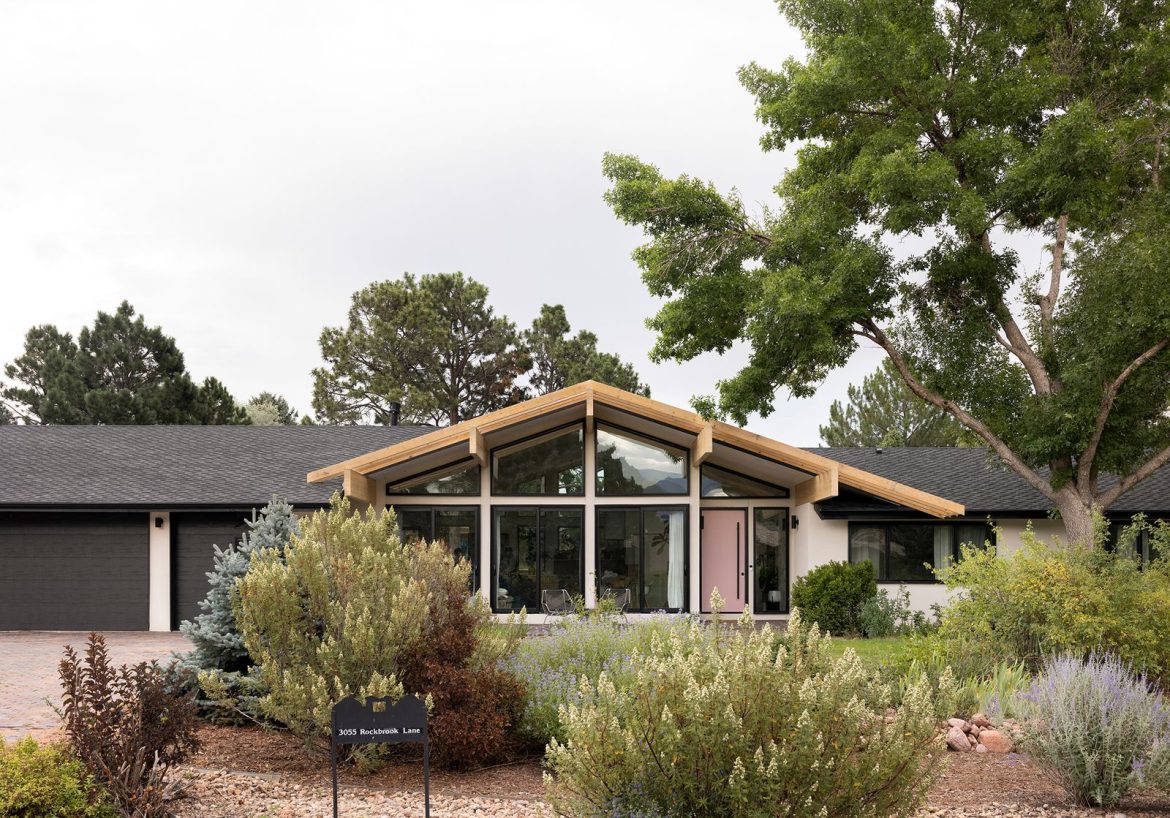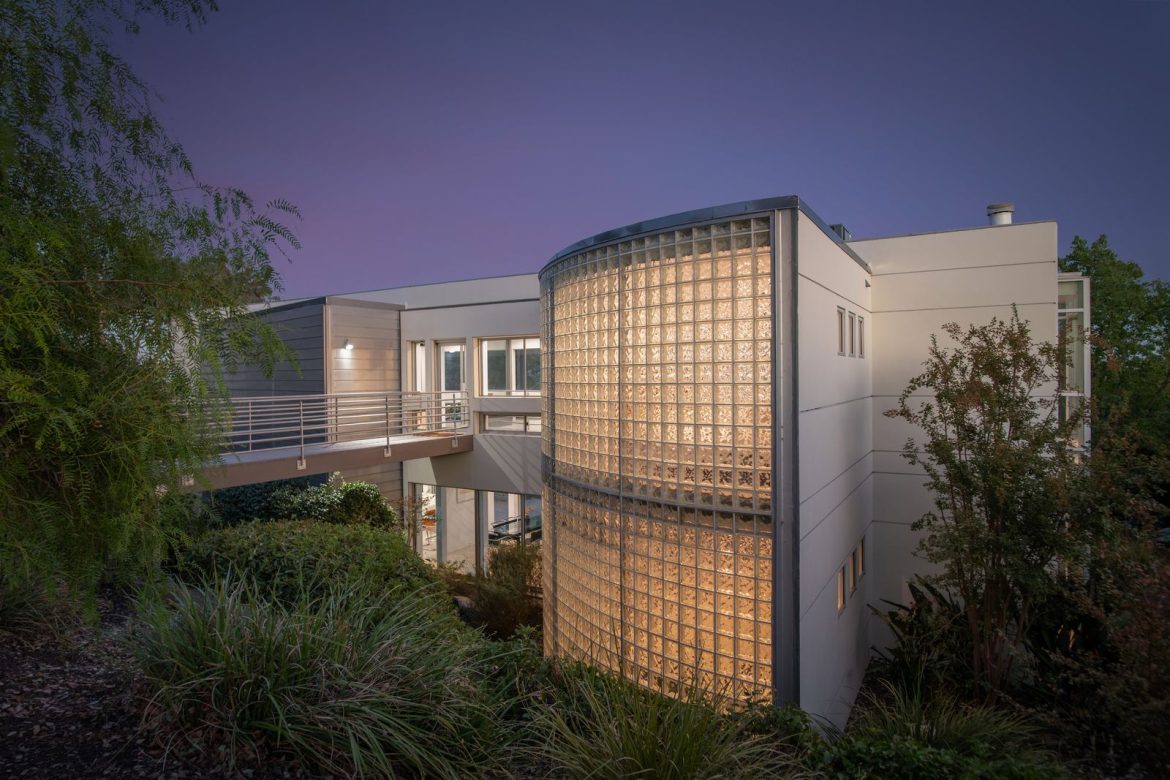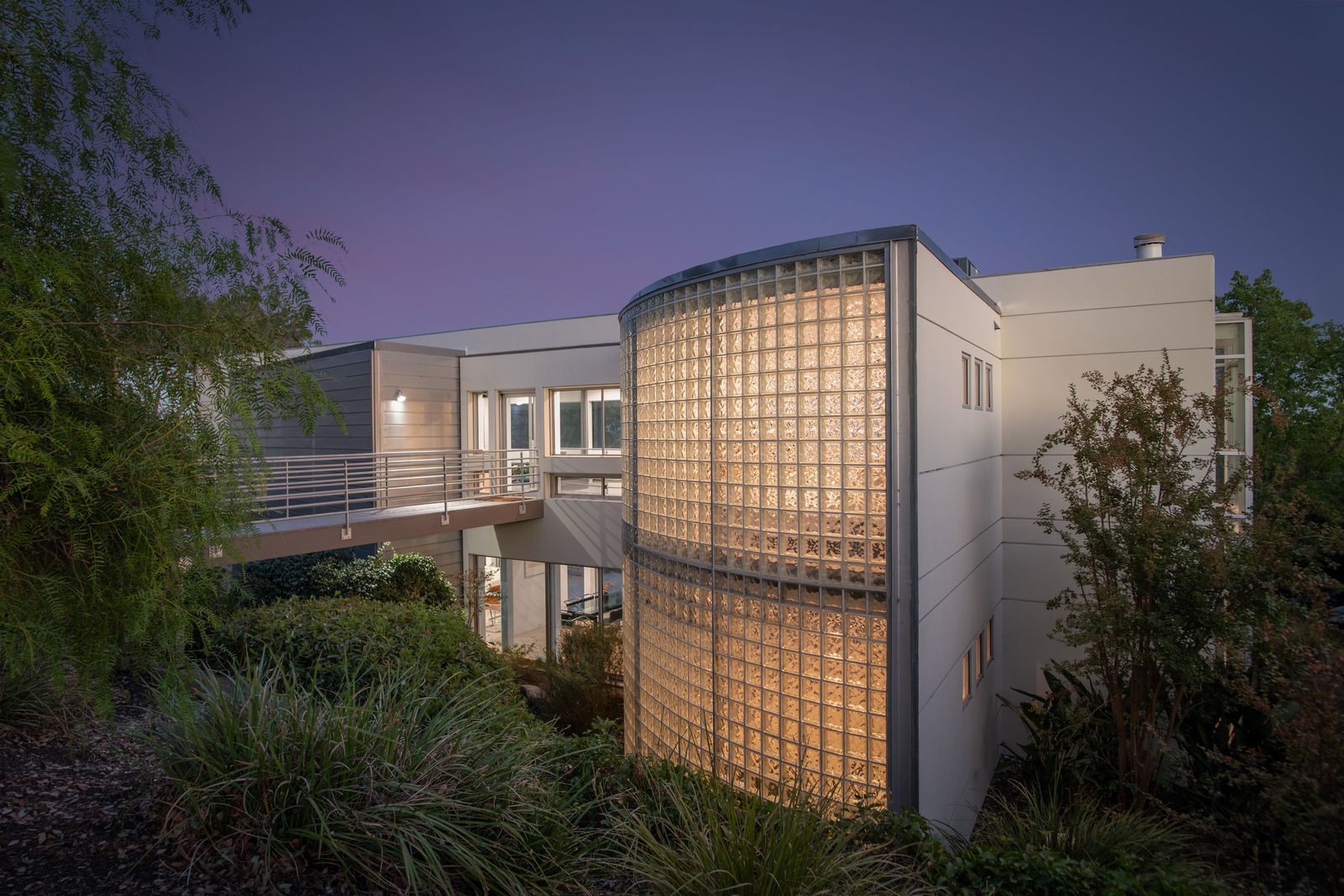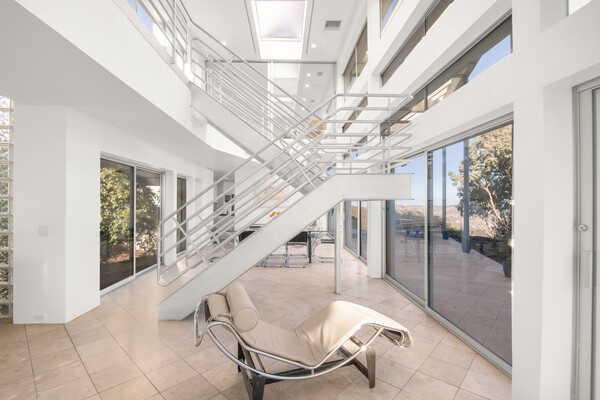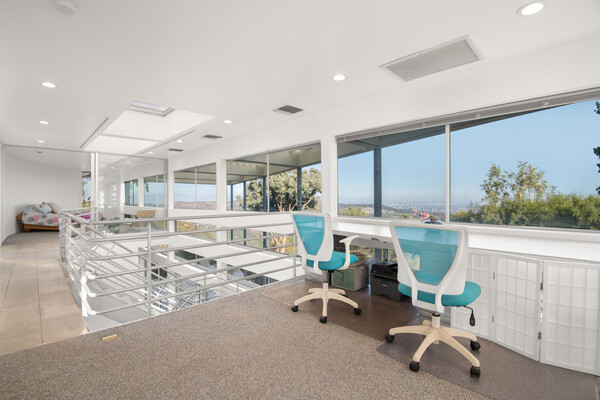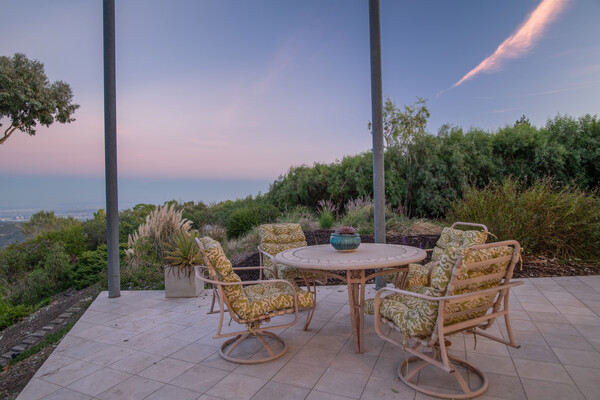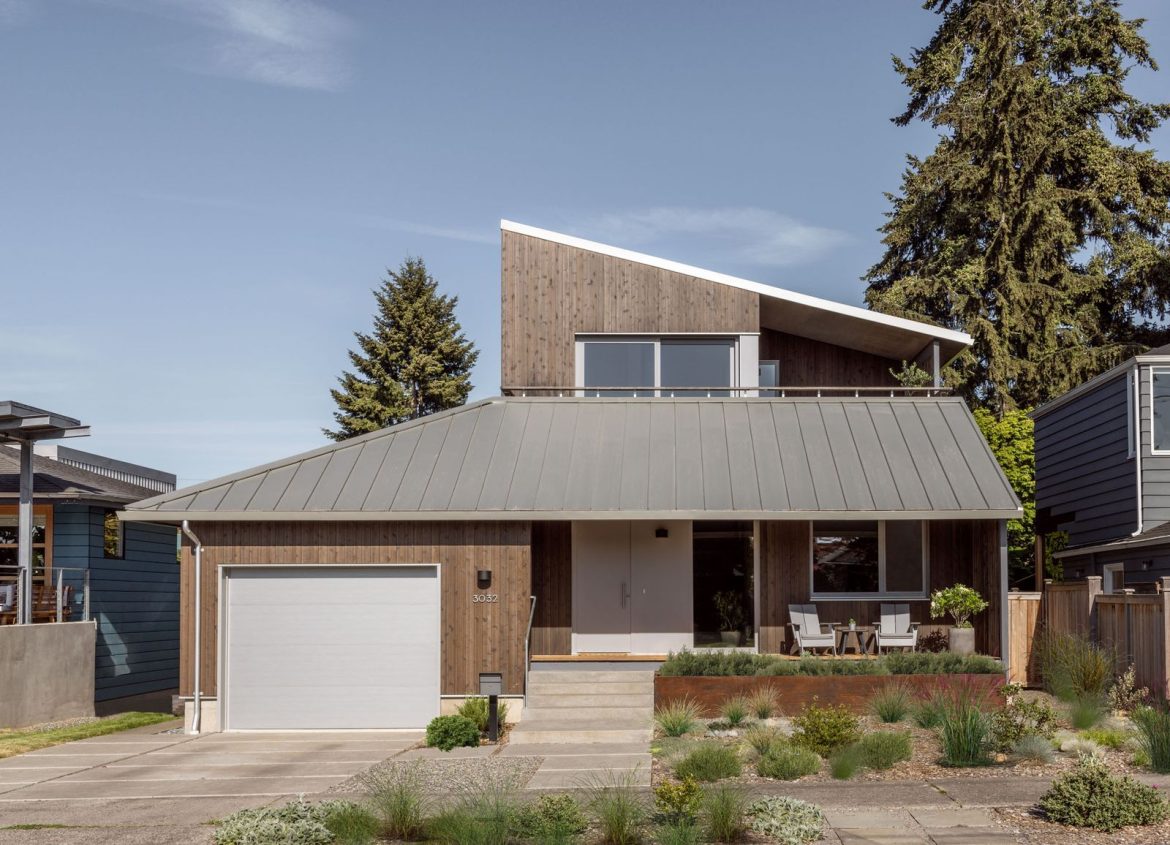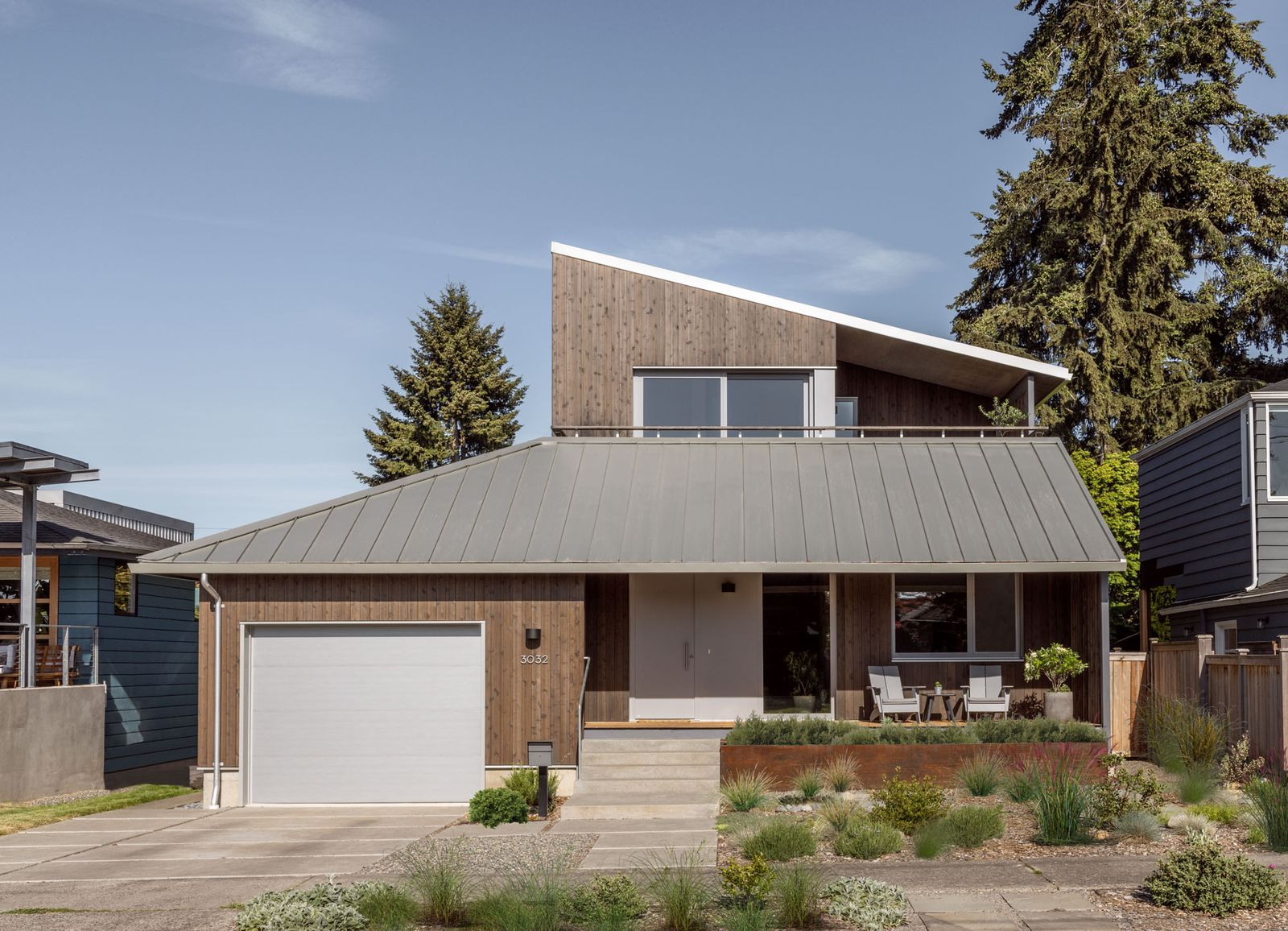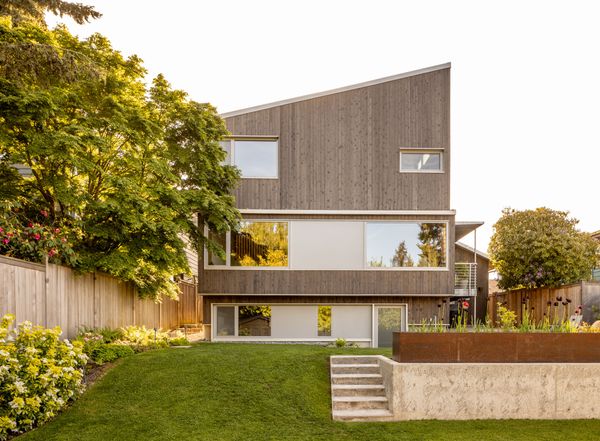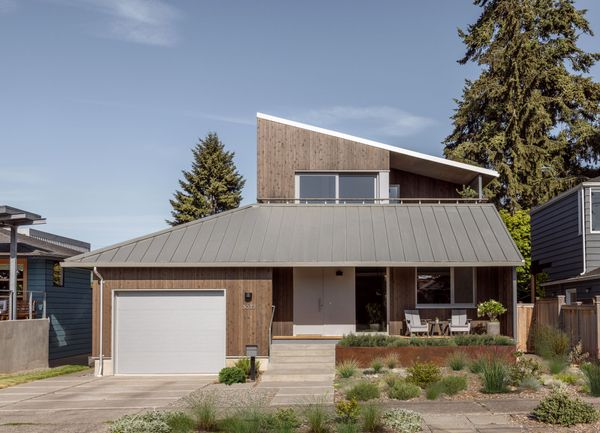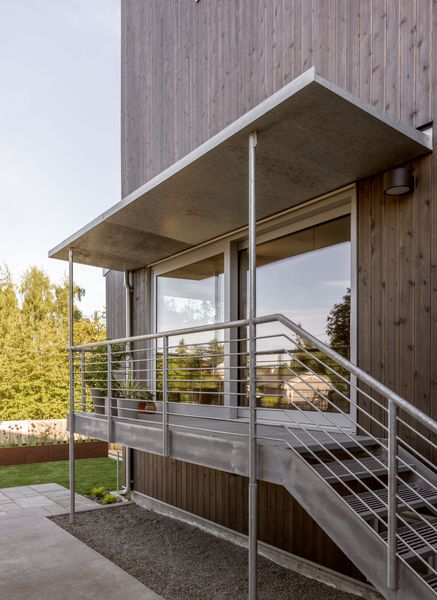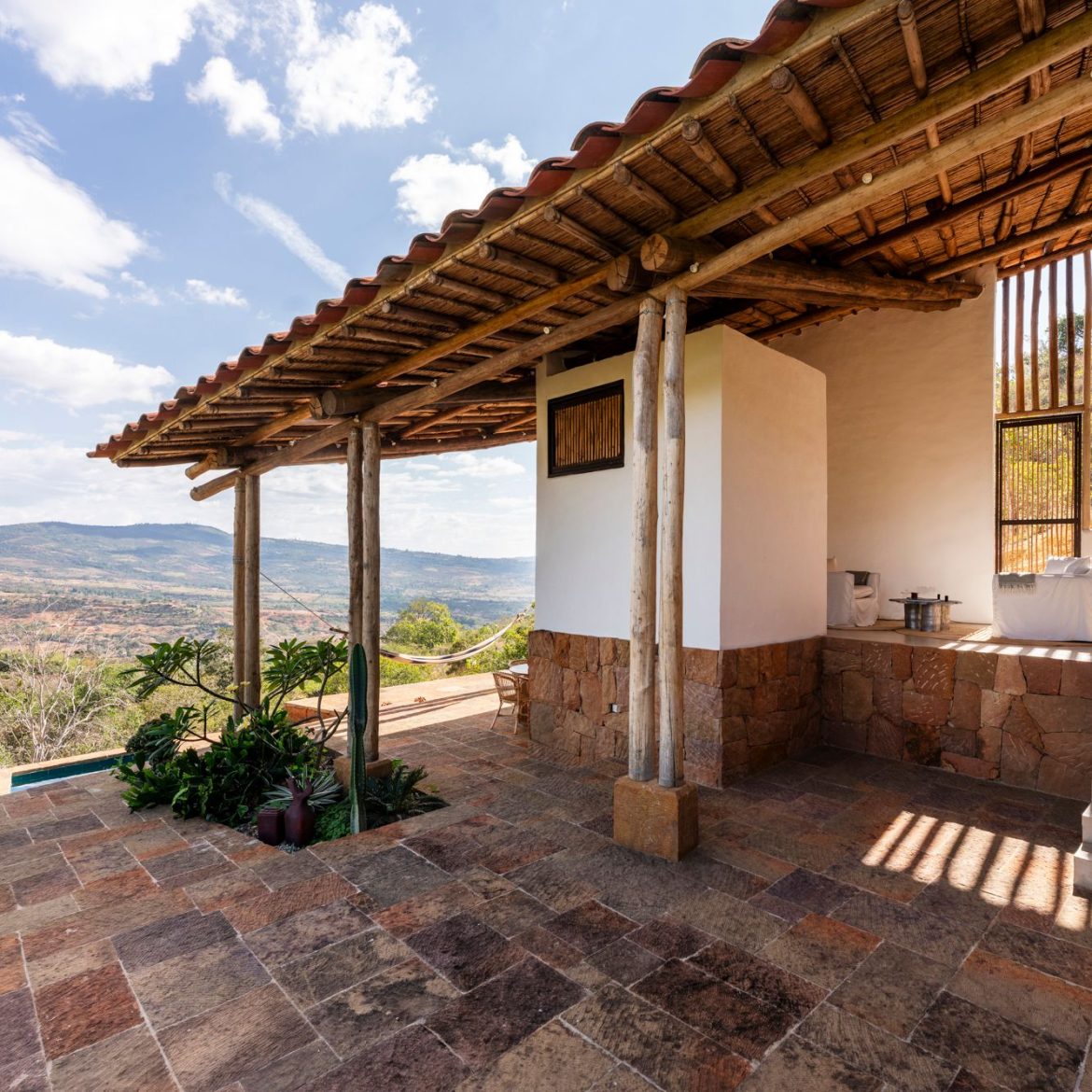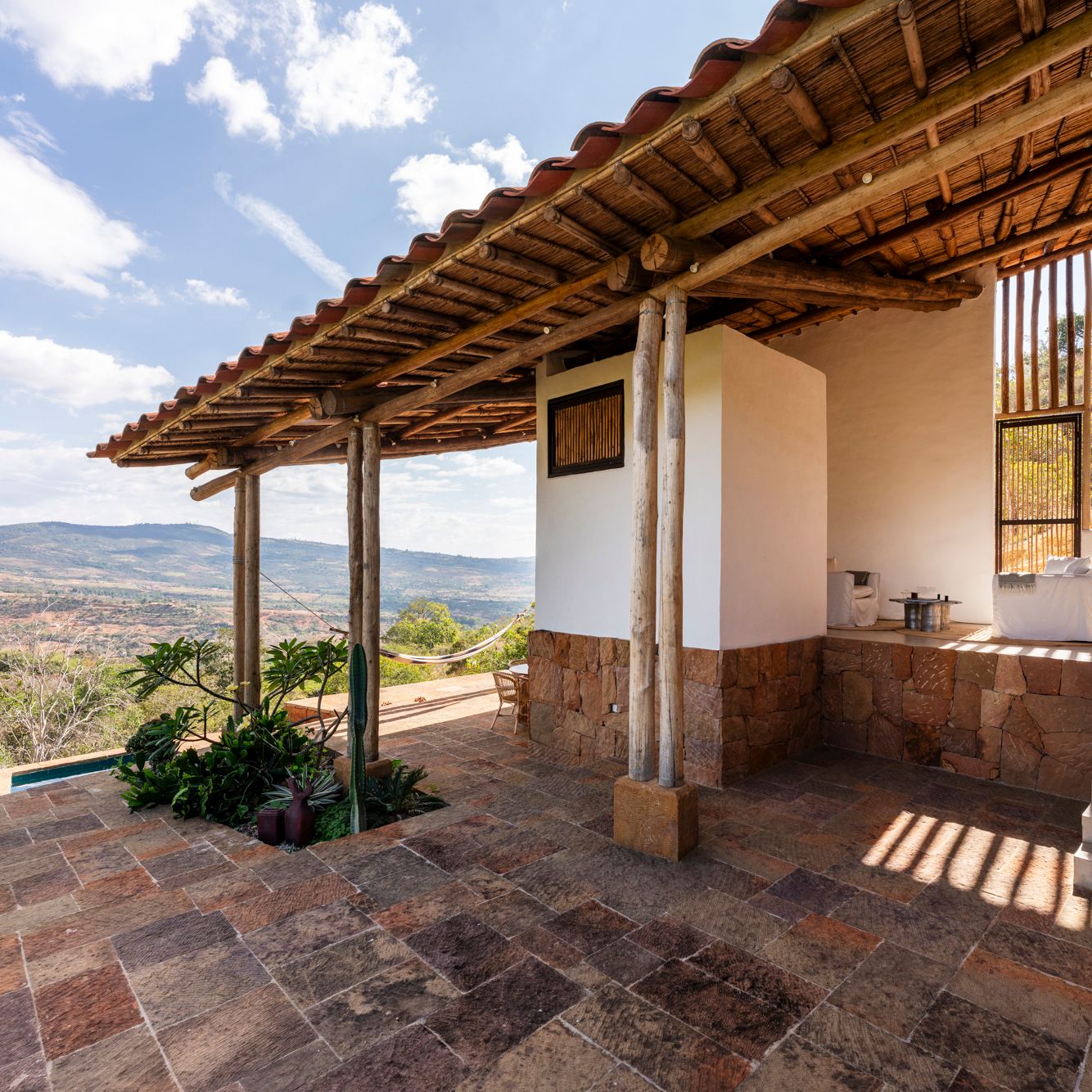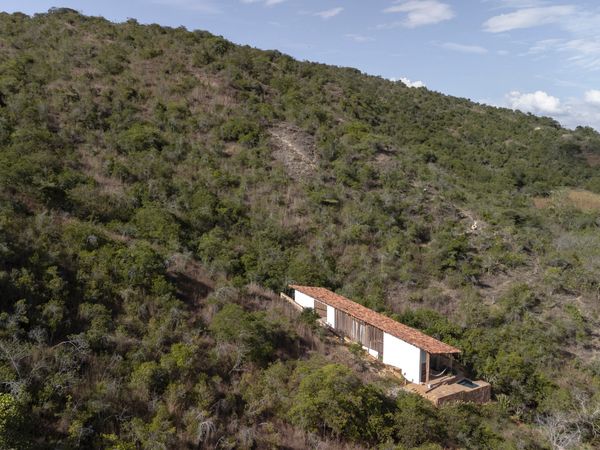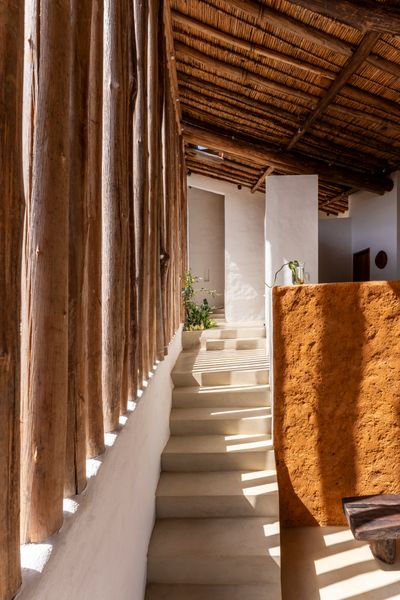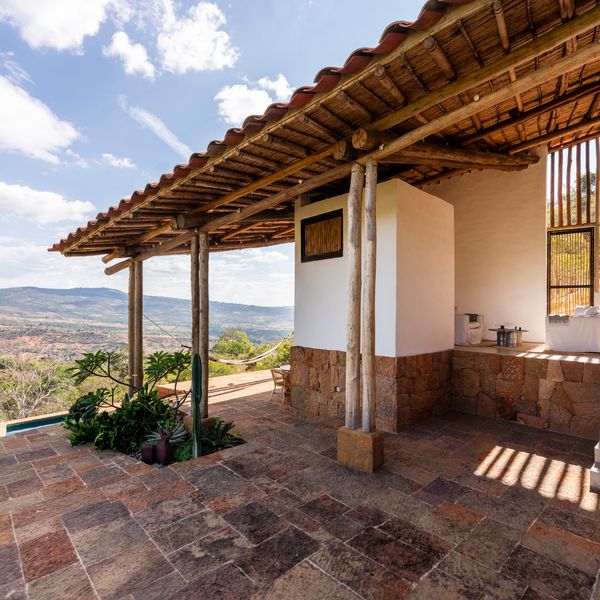A family adds a glassy gable to their Colorado Springs home to bring in sunlight and views of the nearby mountains.
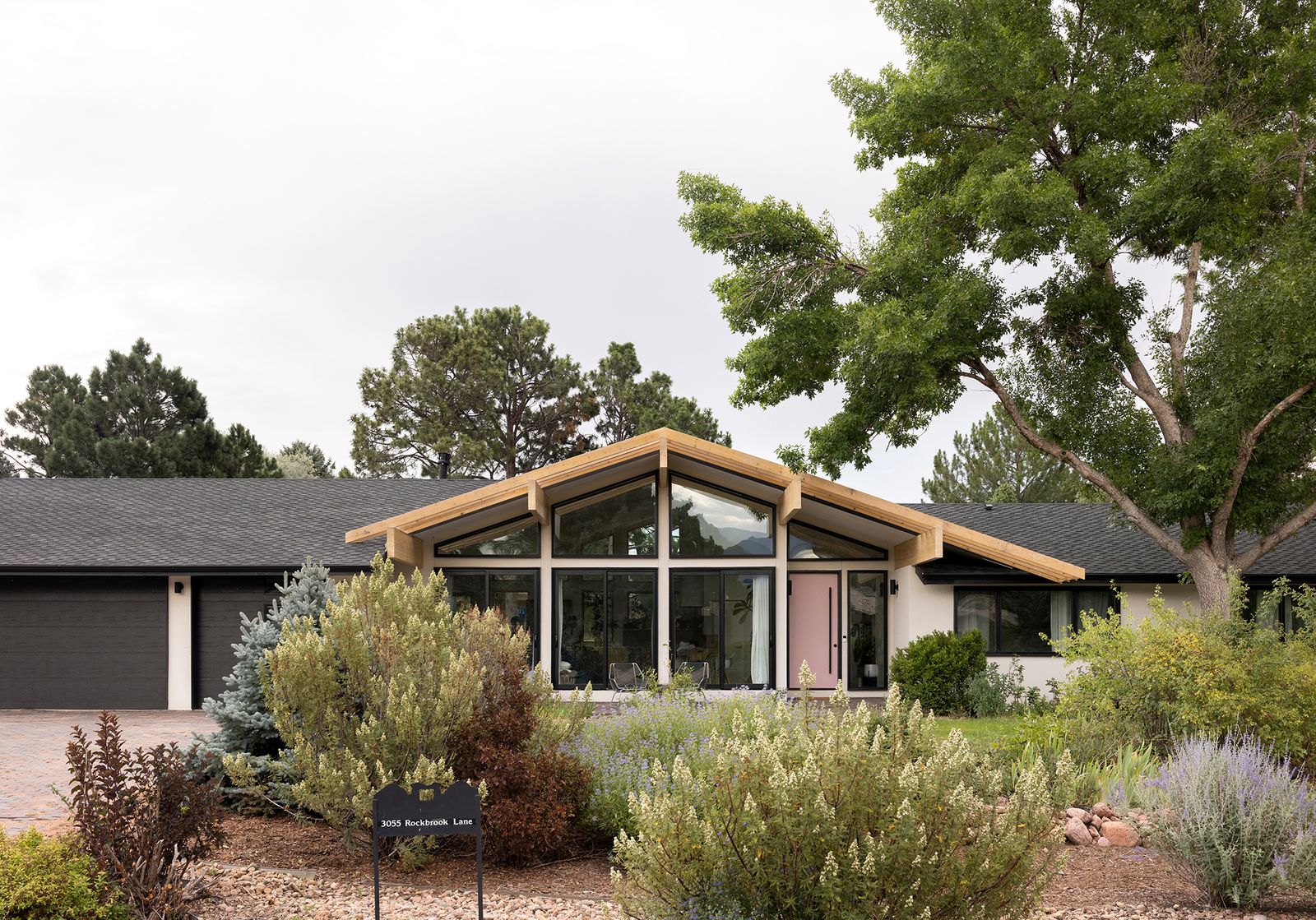
For designers, working with family can go one of two ways: It can either bring you closer together, or exacerbate existing tensions. Luckily, for Portland, Oregon–based Jason Stamp and Lara White, partners at Workaday Design, a renovation project for Jason’s brother Taylor and his wife, Averi, had the former effect. “There were definitely challenges,” says Stamp of the process, which involved renovating a home for the couple and their two kids in Colorado Springs. “But we are not only family, we are also great friends. It made it easier to be frank and have those harder conversations.”
Taylor and Averi had been planning to move out of their 1925 craftsman for a long time. “We had talked with them over the years about renovating a new place, and when they finally found the right house, they asked us to help them overhaul it,” says Stamp about the low-slung, 1960s rambler that Taylor and Averi ultimately landed on. So began the family’s journey to transform the dark, compartmentalized residence into an open and daylit dream home.
Before: Exterior
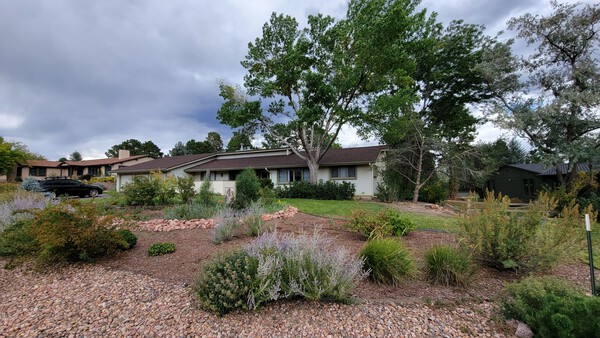
Before: The low-slung home was nondescript, and its roofline limited the potential for views.
Photo: Workaday Design
One of the couple’s main goals for the renovation was to capture views of nearby Pike’s Peak, the most prominent mountain on the horizon. “Taylor and Averi had been obsessing over getting this view for as long as they’ve lived together in Colorado Springs,” recalls White. “When they bought this new house, there were no views, so opening it up became a major focal point of the renovation.”
After: Exterior
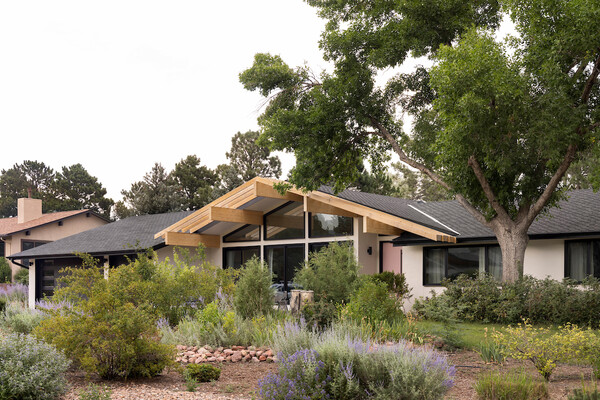
Introducing a new gable over the entry and lifting the roof line created a new “view corridor” toward Pike’s Peak.
Photo: Meagan Larsen
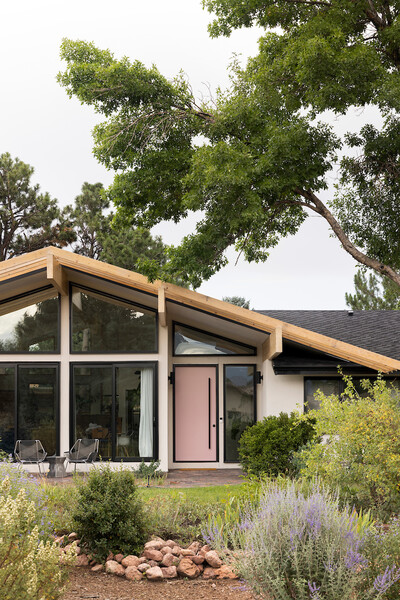
The designers introduced new Alaskan yellow cedar glulam beams for the updated roofline and windows by Pella. The front door is painted Rose Colored by Sherwin Williams.
Photo: Meagan Larsen
See the full story on Dwell.com: Before & After: They Raised the Roof to Unlock Their Midcentury’s Peak Potential
Related stories:
